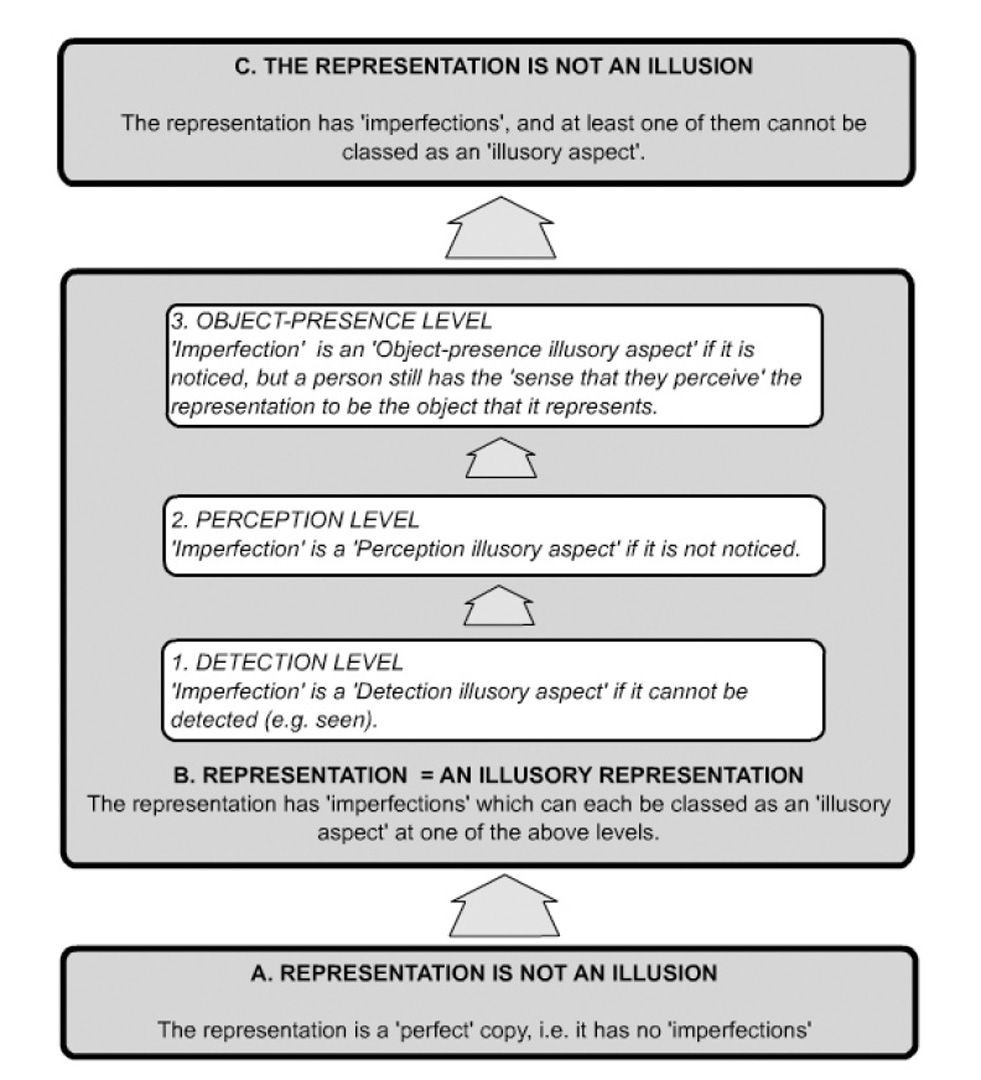“The ‘detection, perception and object-presence’ framework: a unified structure for investigating illusory representations of reality” by Bennett and Stevens
Conference:
Type(s):
Title:
- The 'detection, perception and object-presence' framework: a unified structure for investigating illusory representations of reality
Presenter(s)/Author(s):
Abstract:
An illusory representation of reality is percieved to actually be the object or environment that it depicts. For example, Augmented Reality creates the illusion that a computer-generated object is a real object that exists in a person’s environment. Conversely, Virtual Reality aims to ‘immerse’ the user and make them perceive, to some degree, to be in the virtual environment. Furthermore, the object that a representation depicts may actually be another form of representation. For example, a computer- generated image could create the illusion of being a photograph. This paper proposes a unified framework for assessing the success of illusory representations of reality; namely the ‘Detection, Perception, Object-Presence framework’.
References:
1. Gregory, R. L. {1997}, Knowledge in Perception and Illusion. Philosophical Transactions: Biological Sciences, 352, 1121–1128.





